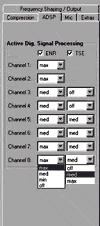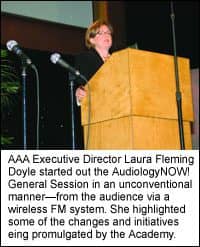Computers are a lot more than simply agents of change; they are restructuring the entire fabric of culture. A computer is not merely a different way of obtaining or sending information. When a computer enters into one’s business, professional or even personal life, it can reshape fundamental aspects of that life. What used to be adequate information flow suddenly becomes woefully inadequate. The speed of decision-making is forced to accelerate. Greater independence and autonomy is fostered while at the same time creating a greater dependence on technology and systems engineers.
There can be a metamorphosis of daily activity into some other processes that were never anticipated or expected. Settling into a comfortable routine becomes almost impossible, as there is a constant mandate to try new things, upgrade existing systems, and stay ahead of obsolescence. Life changes when computers enter the picture. Yet, as life changing as computers are, their place in today’s world is undeniable.
This scenario is no less true in the field of hearing health care. As comfortable as one might be in spinning dials and pressing bars to obtain results, or in drawing circles and x’s on a grid, these elements are tools of the past, and their continued use will eventually render their user uninformed to a new audiology that is being driven and defined by the computer.
Computers in the Sound Booth
In a typical, busy diagnostic and fitting practice, the routines of case history, pure tone air, bone, speech and tympanometry become clockwork. Speed and precision are essential elements of that clockwork. The comfort associated with sliding into the chair in front of the audiometer and autonomically setting stimulus, transducer, intensity and frequency settings, and the rote spinning of dials, pressing bars and drawing symbols, is not easy to give up. The risk is that the clockwork becomes interrupted. At least for awhile. And sometimes, the price of that risk appears too high.
Unfortunately, there is also a risk that maintaining the traditional routine and procedure model will render one’s practice competitively and qualitatively moribund. Today, it is possible for case history information and outcome-based survey data to be entered directly into the practice’s computer system by the patient, or by other practice staff. Practitioners can then move their patient interview right to the important issues by reviewing this patient-provided data (entered into a networked computer by the patient in the waiting room). Chart information and referral data can be electronically transferred from the referral source directly into the practice’s electronic chart for reference and review. Key entries can be highlighted and annotated during the interview process. Report templates can automatically be completed in the background while data is being entered into the system, so that reports are ready for transmission or print-out as the session is being completed.
Believe it or not, keyboards can make good audiometers (Fig. 1). The autonomic routine of pressing cursor keys to change frequency and intensity, and space bars to present stimuli can become every bit as comfortable as dial spinning, once practiced. For those that simply struggle with this transition to a keyboard, some devices (e.g., Madsen Aurical1) have accessory panels which contain the traditional dials and bars that can be plugged into the computer, giving the operator more traditional controls while benefiting from computerized functionality.

The electronic display can be stored, creating a permanent paperless record of the test results, which can be accessed at any time by the operator, and automatically inserted into the report template. This electronic record can also be transmitted to other professionals, or printed out in a form and structure that looks far more professional than handwritten grids.

In addition, electronic displays of test results enhance the effectiveness and fluidity of instructional sessions. Speech energy representations can be electronically added to the audiogram grid, and sound demonstrations of the hearing loss associated with the displayed audiogram can be played through the computer to provide all participants in the instructional session with clear, meaningful information about the test results.3
Using Computers to Create New Science and Technology
For many, their first experience with the computer as part of the patient care process came with the introduction of programmable hearing instruments. As performance adjustment tools multiplied and moved from the trim-pot to the computer screen, dispensers were forced to bring a computer into their fitting room. Now, with digital hearing instrument technology, sound processing is being manipulated in ways we only dreamed of as little as 15 years ago.
Today, facilitated by the use of computer-based diagnostic and fitting systems, it is possible to create a patient-specified fitting target in a variety of ways without the use of an audiogram.3,4 Increasingly, dispensing professionals will find that it is even possible to have the patient “interact” with the programmable features of the hearing instrument, and literally program these features themselves through computerized evaluation procedures.

Another option is that the procedure can be coupled to a loudness growth test, generating ear-specific SPL quantification of not only threshold, but also MCL, UCL and other loudness judgement levels. These SPL loudness contours can then be automatically transferred to the real ear measurement fitting screen of the Aurical, creating a series of patient-specific SPL targets that can be associated with different levels of input stimuli. With this approach, it is possible to set gain and multi-band compression settings precisely to deliver exactly the amplification performance necessary to restore normalized loudness perception. In fact, this entire procedure can be automated so that the computerized settings of the programmable aid are automatically configured to accommodate multiple loudness targets.

Computerized procedures for evaluating and quantifying dynamic and interactive hearing instrument features, such as dual microphone directionality, digital noise reduction technology and digital feedback management designs, are starting to appear and will continue to be refined in the future. For example, the “Auditory-Life” computer system described by Haubold & Schweitzer4 incorporates psychoacoustic research into an interactive process to optimize the settings of hearing devices. Patient judgements of loudness, sound quality, comfort, directivity and performance in noise, using digitally recorded samples of a multitude of normal listening conditions as the backdrop, are obtained and compared to the judgements made by normal-hearing people in the same listening conditions. Gaps between patient judgements and normal hearing judgements are identified and adjustments are made or recommended in the hearing device settings so that a more normal result is facilitated (for an illustration of the system set-up, see the Oct. 2000 HR, pg. 69).
Quadraphonic speaker arrays are currently available to provide three-dimensional environmental simulations that can provide the patient with a subjective means of experiencing certain hearing aid design benefits in a variety of simulated listening conditions.3 In the future, computer-driven aided tests will be made available that will allow fitters to quantify directional advantage and noise reduction advantage in 180° or 360° environmental simulations using these types of virtual recordings to simulate just about any input condition the patient is interested in improving. These tests can then be used not only to validate the advantage of these hearing aid performance features for both the dispenser and the patient, but also to compare relative merits of different settings or different technologies in an effort to deliver the best fitting to the patient. Similar tests utilizing more efficient and less invasive probe assemblies will be made available to evaluate feedback management functions and quantify (in frequency response format) the amplification performance changes that occur when interactive features, such as directionality or noise reduction, are activated.
Professional Evolution
Last May, over 100 dispensing audiologists received their AuD degree by graduating from the Univ. of Florida Distance Learning Program. This program, as well as the others that offer distance learning, rely heavily on computer-based instruction, chat rooms and email correspondence. Computer-based learning environments will gain further popularity and use in the future for all hearing health care professionals. But it won’t end there. Computerized learning and instructional models will evolve to offer continuing education and professional upgrade opportunities, and may well become the CEU mechanism of choice.
Soon, practitioners will be placing all of their hearing instrument and accessory orders electronically through secured areas on manufacturers’ websites. Impression information will probably evolve into some digitized form, facilitating electronic transmission. E-commerce in a variety of forms will permeate the hearing health care process, from manufacturer to dispenser, and from dispenser to patient. With these changes, new and innovative ways of selling, providing service, programming, updating and delivering hearing devices and hearing health care services will continue to evolve, challenging both the philosophies and ethical stances of the constituency. Through these debates, it is likely that hearing care professions will take on a new look and position in the marketplace.
Thinking “Outside of the Box”
In addition to computers managing and disseminating information more efficiently, computers are also changing the way we administer hearing care and the way we conduct business. Not only will existing diagnostic and fitting tests be replaced by newer, more robust and informative procedures, but more interesting and effective hearing loss solutions will be facilitated by the presence of the computer as well. Information about these advancements will reach more destinations more rapidly. And these advancements will, in turn, be challenged and replaced at a faster pace.
Change is one aspect of computerization. Innovation and the undermining of fundamental beliefs and procedures at mind-blowing speed is another still. Our individual capacity to incorporate the computer into hearing science, our businesses, our culture, our belief systems and our lives will dictate our individual ability to succeed and grow as hearing science professionals.
If the computer resides in the test booth or the fitting room simply so that the practitioner can run NOAH, then that practitioner has not yet realized the full audiological benefits that are possible both now and in the future. Like it or not, the direction of this science and this profession is inexorably tied to the computer. Both the horizon anticipated and the landscape viewed will bear its footsteps. Breaking with traditional models and the security represented by the “old routine” is never easy. Yet, our profession is defined these days by such dramatic evolutions. Computerization is a necessity with an impact that may still be at the “frontier stage,” but what awaits us promises to be both fascinating and rewarding for those who take the ride. w
References
- Madsen Electronics: Operating Manual for the Aurical computer-based diagnostic and fitting system. Minnetonka, MN: Madsen Electronics, 1999.
- GN ReSound: Danafit programming software operating manual. Minnetonka, MN: GN ReSound, 1998.
- Meskan M & Robinson J: A Patient-Focused Approach to Fitting Hearing Instruments. Hearing Review 2000; 7 (12) 62-66, 73.
- Haubold J & Schwietzer C: Fitting for an “Auditory Life”, Part 2. Hearing Review 2000; 7 (10): 68-71, 88.
This article was submitted to HR by David J. Smriga, MA, vice president of industry and public relations at GN ReSound, Minnetonka, MN. Correspondence can be addressed to HR or David J. Smriga, GN ReSound, 5600 Rowland Rd., #250, Minnetonka, MN 55343; email: [email protected].





